You are using an out of date browser. It may not display this or other websites correctly.
You should upgrade or use an alternative browser.
You should upgrade or use an alternative browser.
Blue Skies in Camelot (Continued): An Alternate 80s and Beyond
- Thread starter President_Lincoln
- Start date
Just as I was about to take a good night's sleep here Mr. President, you just surprised me on uploading your next chapter about The British Television in the 70's ITTL genius! Now a 2-Part Special on Chapter 132, make it a 3-Part Special with The Philippine Television in the 70's ITTL as well if you want my suggestion genius. Television in the Philippines during the 70's ITTL was continuing its Golden Age from the 60's now that Marcos, Sr. lost the 1965 Election, is out of the picture, and doesn't control the media IOTL. Overall genius, another impressive chapter you've made.
Doctor Who in the 70's ITTL was one of the iconic eras ever made with Alec Guinness and Tom Baker giving their iconic performances as The 3rd and 4th Doctor respectively. So Disney premiered Doctor Who Meets Scratchman with a co-production from BBC in 1978? That's impressive! Let me get this straight, Disney got the film's rights while PBS got the television's rights? Anyway, whoever The 5th Doctor you may be picked in the 80's, I hope for its best.
Monty Phyton's Flying Circus and Fawlty Towers were the example of the finest in British Television and an iconic to the rest of the world. I didn't know Top Gear started in 1977, I thought this show started in the 2000s because of the iconic trio of Clarkson, Hammond, and May that made the show an international recognition because of them.
Well geniuses, looks like we're off to The Music of the 70's - A Retrospective.
Doctor Who in the 70's ITTL was one of the iconic eras ever made with Alec Guinness and Tom Baker giving their iconic performances as The 3rd and 4th Doctor respectively. So Disney premiered Doctor Who Meets Scratchman with a co-production from BBC in 1978? That's impressive! Let me get this straight, Disney got the film's rights while PBS got the television's rights? Anyway, whoever The 5th Doctor you may be picked in the 80's, I hope for its best.
Monty Phyton's Flying Circus and Fawlty Towers were the example of the finest in British Television and an iconic to the rest of the world. I didn't know Top Gear started in 1977, I thought this show started in the 2000s because of the iconic trio of Clarkson, Hammond, and May that made the show an international recognition because of them.
Well geniuses, looks like we're off to The Music of the 70's - A Retrospective.
Last edited:
Indeed! This is going to be an epic battle of the titans!Thank you so much. Reagan vs Kennedy! Liberal vs Conservative! Most consequential Election in American history, Lets go!
Oh, he was in Fallout New Vegas? Nice!RIP to Matthew Perry. I remember first seeing him in an episode of The West Wing, in which he guest-starred. I've never really been a big Friends guy, but I am a fan of Perry and his talent. My favorite role of his was probably his voice work as Benny in Fallout New Vegas, my favorite video game of all time.
Also, darn Mr. President! I keep learning so much about you! I didn’t know you were a Fallout guy like me!
I wonder if, with an earlier #MeToo movement (called So Have I here TTL), if a famous BBC personality with the initials JS (1) gets found out for his crimes earlier than OTL--the effects of that would be very interesting, IMO...
The chances of his being exposed earlier have just gone way up, methinks...
Good chapter, BTW...
(1) JS, of course, stands for James Savile (I am not going to call him Sir because he doesn't deserve it), aka Jimmy Savile, one of the most prolific sexual abusers in British history in OTL...
That is a good point hopefully like Polanski he gets tried and Imprisoned
Indeed…Not only Savile, but a certain LibDem politician named Cyril Smith could also potentially be exposed early in TTL.
Edit: forgot that its still the Liberal Party TTL. The merger with the SDP could potentially be butterflied.
Great update on British television. Glad to see that in Blue Skies Doctor Who and the Scratchman was made into a movie! As someone who owns the book and has read it many times to imagine it on the big screen in the 1970s is a joy!
Also glad Blake 7 is going strong too. Love that show. It's a favourite of mine. Are there any differences or changes I wonder?
Faulty Towers is iconic along with Monty Phyton. Also I had no idea Top Gear started out in the 70s! Learn something new everyday
Also glad Blake 7 is going strong too. Love that show. It's a favourite of mine. Are there any differences or changes I wonder?
Faulty Towers is iconic along with Monty Phyton. Also I had no idea Top Gear started out in the 70s! Learn something new everyday
"Tom Baker as the Fourth Doctor on Doctor Who" - really like that opening quote there.
"Color television was not only a technical advancement but also a cultural one" - I don't remember TV being in back & white, except when I saw it on a b&w set!
"The Doctor at the time - the 3rd, played by Alec Guinness" - certainly a very cultured Doctor there.
"The show would run for four series between 1975 and 1979, producing a total of twenty-four episodes." - wow, double OTL.
"There was Steptoe and Son." - also famous for some of its course humour, and taking on some of the attitudes of the older generations.
"Upstairs, Downstairs offered a glimpse into the lives of the upper-class Bellamy family and their servants" - saw it on repeats. Was surprisingly good as I recall.
"PBS purchased the rights to air episodes of Doctor Who in the United States" - one hopes that stops some of the early tapes being wiped!
"Blake's 7, meanwhile, brought a darker and more dystopian vision of the future to the screen." - oh aye that it. Plus making teenagers desire the evil leader! Hopefully it has a happier production than OTL and a better end.
"it is science-fiction for the disillusioned and ironic — and that is what makes it so very British" - LOL!
"Diana Rigg, who played Emma Peel," - Great the got Rigg for New Avengers, it would make the show more of an effective sequel. Would like Joanna Lumley to get a nice series to kickstart her career though.
"Sapphire & Steel," - yup that should give Joanna a good boost. Stronger show than New Avengers if I remember the repeats right.
"Till Death Us Do Part " - still holds up today, esp since there are those folk about whom think Alf was right...
"Mind Your Language" - I think I saw the 80's revival and it was crap then, so I am glad this one dies.
"Citizen Smith." - I seem to remember the character Rik in The Young Ones was a send up of Smith as well as 'stereotypical leftie' students.
"Top Gear" - probably the best motoring show..... in the world!
Great chapter.
Thank you for the look at UK TV @President_Lincoln
"Color television was not only a technical advancement but also a cultural one" - I don't remember TV being in back & white, except when I saw it on a b&w set!
"The Doctor at the time - the 3rd, played by Alec Guinness" - certainly a very cultured Doctor there.
"The show would run for four series between 1975 and 1979, producing a total of twenty-four episodes." - wow, double OTL.
"There was Steptoe and Son." - also famous for some of its course humour, and taking on some of the attitudes of the older generations.
"Upstairs, Downstairs offered a glimpse into the lives of the upper-class Bellamy family and their servants" - saw it on repeats. Was surprisingly good as I recall.
"PBS purchased the rights to air episodes of Doctor Who in the United States" - one hopes that stops some of the early tapes being wiped!
"Blake's 7, meanwhile, brought a darker and more dystopian vision of the future to the screen." - oh aye that it. Plus making teenagers desire the evil leader! Hopefully it has a happier production than OTL and a better end.
"it is science-fiction for the disillusioned and ironic — and that is what makes it so very British" - LOL!
"Diana Rigg, who played Emma Peel," - Great the got Rigg for New Avengers, it would make the show more of an effective sequel. Would like Joanna Lumley to get a nice series to kickstart her career though.
"Sapphire & Steel," - yup that should give Joanna a good boost. Stronger show than New Avengers if I remember the repeats right.
"Till Death Us Do Part " - still holds up today, esp since there are those folk about whom think Alf was right...
"Mind Your Language" - I think I saw the 80's revival and it was crap then, so I am glad this one dies.
"Citizen Smith." - I seem to remember the character Rik in The Young Ones was a send up of Smith as well as 'stereotypical leftie' students.
"Top Gear" - probably the best motoring show..... in the world!
Great chapter.
Thank you for the look at UK TV @President_Lincoln
I was hoping for you genius that Chapter 132 to make it a 3-Part Special with The Philippine Television in the 70's as well ITTL. The Philippine TV was entering to its Golden Age as well since the 60's now that Marcos, Sr. lost the 1965 Election ITTL. With the new 70's and beyond ITTL, television in the country was here to stay with ABS-CBN Channel 2 & 4 (Lopez Family) as the leading network, ABC Channel 5 (Roces Family) would be second, and GMA Channel 7 (Duavit-Gozon-Jimenez Triumvirate) on third. Along with other channels like MBC Channel 11 (Elizalde Family), PBS Channel 10 (Philippine Government), IBC Channel 13 (Soriano Family), and RPN Channel 9 (Benedicto Family).
This would also bring you all geniuses a new perspective on The History of the Philippine Television from 60's and Beyond ITTL.
This would also bring you all geniuses a new perspective on The History of the Philippine Television from 60's and Beyond ITTL.
Last edited:
Neat. Hit me up via PM if you have questions or need any insights.I plan on doing another comics update in the near future.Would definitely be interested in getting into some of these details in that update.
only focusing on the UK shows i actually know (which is not alot, im not as big on UK TV compared to something like anime, korean and indian dramas, american sitcoms/cartoons/game shows/reality shows from the 70s-2010s or the cancon i grew up on as a kid in the 2000s/2010s so UK TV especially 70s and 80s UK TV from another world is even more alien to me)"Color television was not only a technical advancement but also a cultural one" - I don't remember TV being in back & white, except when I saw it on a b&w set!
"PBS purchased the rights to air episodes of Doctor Who in the United States" - one hopes that stops some of the early tapes being wiped!
"Top Gear" - probably the best motoring show..... in the world!
Great chapter.
Thank you for the look at UK TV @President_Lincoln
1. oh you sweet summer child, wait till you see HDTV, (which probably comes out in 1987 or so with americas more advanced tech industry and all) its like bringing the cinema home (like how the amiga and sharp x68000 and what could have been the panasonic m2, dreamcast windows 95 and N64 DD brought the arcade home) i just hope all those consoles succeed in TTL then im home
2. YES KTEH's anime block confirmed (wonder if other PBS stations get anime like with KTEH and dr who)
3. im guessing top gear in TTL is iconic in the UK as mcdonalds and the olympics is in the states (idk, like i said UK TV especialy older UK TV is very alien to me epsecially in another world like this one)
Last edited:
Thank you kindly!@President_Lincoln , AMAZING work as always mate!
Chapter 133
Chapter 133 - Boogie Wonderland: Popular Music in the 70s - A Retrospective
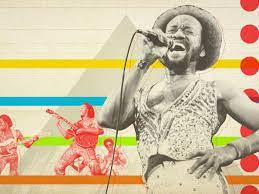
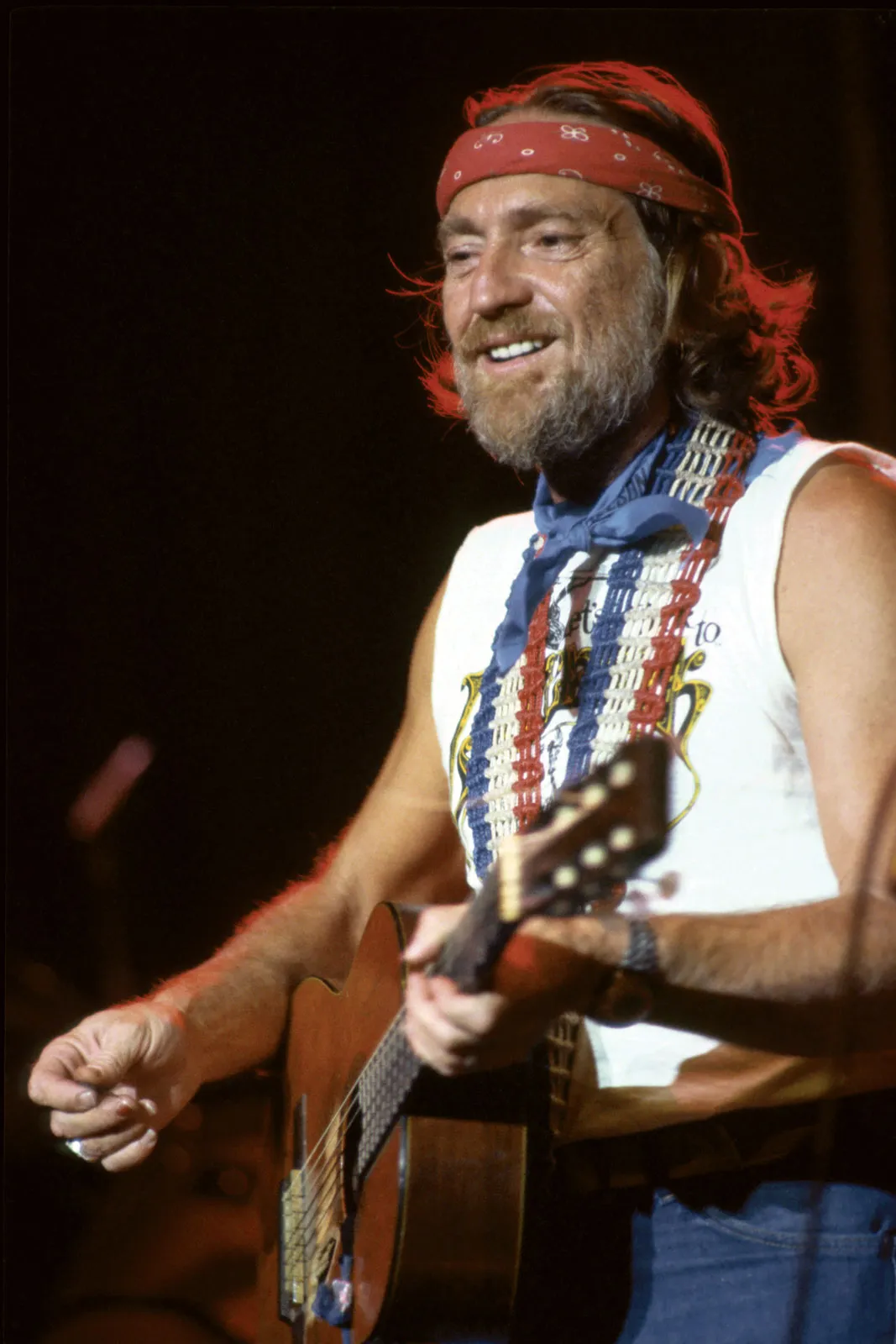

“All the love in the world can't be gone
All the need to be loved can't be wrong
All the records are playing and my heart keeps saying
‘Boogie Wonderland, Wonderland’” - “Boogie Wonderland” by Earth, Wind & Fire
“Three chords and the truth - that’s what a country song is.” - Willie Nelson
“Life is too short to have anything but delusional notions about yourself.” - Gene Simmons
“Everyone knows Rock achieved perfection in 1974.” - Homer Simpson
Ah, the “Seesaw Seventies”. They were the best of times; they were the worst of times. Though few would call gas lines, shortages, and widespread proxy wars a “good time”, when it came to popular music in the West, the 70s were downright groovy.
In North America, Europe, and Oceania, the decade saw the rise of disco, which became one of the biggest genres of the decade, especially in the mid-to-late 70s. John Travolta burned up the dance floor on the silver screen in Saturday Night Fever. Many still consider disco to be the soundtrack of the 70s. Though, of course, disco wasn’t everyone’s cup of tea.
For others there was funk, soul, R&B, smooth jazz, and jazz fusion, all of which remained popular throughout the decade. Rock music too played an important part in the Western music scene, with punk rock in particular thriving throughout the mid to late 70s.
Given Rock’s dominance and continued evolution, however, it should surprise approximately no one that the genre splintered into several subgenres. These included, but were by no means limited to: glam rock, with its makeup and outrageous costumes (think David Bowie); hard rock, with its simple, driving rhythms and lurid lyrical content (Aerosmith & AC/DC, for instance); progressive rock (Yes; King Crimson); art rock (the Talking Heads); blues rock (Robert Palmer, among others); and heavy metal (Black Sabbath). Each achieved varying degrees of success, and laid the groundwork for further evolutions in the future.
There were also brand new genres that sprang up or gained popularity for the first time. Reggae took Caribbean music and brought it to mainstream American audiences. Hip hop emerged and scored its first Top 40 hit with “Rapper’s Delight” at the tail end of the decade.
Alongside the popularity of experimental music, the decade was notable for its contributions to electronic music, which rose in popularity with the continued development of synthesizers. More composers embraced this particular genre, gaining the notice of listeners who were looking for something fresh and eclectic. Its rising popularity, mixed with the popular music of the period, led to the creation of synthpop, which would, again, explode in the 80s.
The 1970s saw the emergence of hard rock as one of the most prominent subgenres of rock music. During the first half of the decade, British acts such as Deep Purple, Led Zeppelin, Uriah Heep and Black Sabbath were at the height of their international fame, particularly in the United States. By the second half of the decade, many other acts had also achieved stardom, namely, Mountain, Grand Funk Railroad, Alice Cooper, AC/DC, Blue Öyster Cult, Kiss, Aerosmith, and Van Halen.
Arena rock grew in popularity through rock acts such as Boston, Kansas, Styx, Journey, Toto, Foreigner, and Heart.
Though psychedelic rock declined in popularity with the end of the 60s, the genre never fully went away. Its biggest stars, Jimi Hendrix and Janis Joplin, continued to collaborate with other artists and refine their style. In Hendrix’s case, this meant a harder, heavier sound, with epic, Zeppelin-style jams that verged on crossing over into prog rock. Though Hendrix’s new direction was less commercial than his earlier work had been, he retained a loyal fanbase for decades to come. Ditto for Joplin, who doubled down on her bluesy, angsty sound. She and husband Kris Kristofferson frequently collaborated, with Joplin eventually becoming an “outlaw country”/southern rock-type singer.
Psychedelic influences continued to be felt throughout the rock world. While groups like the Grateful Dead remained true to the 60s vibes for good, others like the Beatles and the Rolling Stones forged on through the “hangover” of the 70s to regroup and redefine themselves. Indeed, the Beatles, arguably the most famous band in the world, shifted toward more solo projects and participation in “supergroups” with friends like Eric Clapton. But they never fully went away. The “Fab Four” would remain together throughout the decade, releasing a new album every few years or so, and much to the relief of Paul McCartney, touring the world once again. This continued until December 9th, 1980, when, after years of drifting apart and sapped of creative ideas, the band agreed to go on an indefinite hiatus.
Meanwhile, the Rolling Stones, the self-proclaimed, “Greatest Rock N Roll Band in the World” were seen by their fans as gods among men. Their style had been a harbinger of hard rock to come, and several up and coming bands got their start opening for them. With Jeff Beck joining in 1975 as their new secondary guitarist, the band’s style continued to develop, even as critical evaluations of their work in this period were mixed. The ticket sales for their tours never wavered.
In the emerging genre of progressive rock, cerebral bands like Yes, Renaissance, and Rush joined more pop-friendly acts like Boston, Foreigner, Journey, and Kansas. British bands Supertramp and Electric Light Orchestra (ELO) demonstrated “prog influences” while still managing to produce hit records. And though the “arena rock” spectacles of the 70s would become iconic, they would eventually be replaced by more cost effective rock festivals, often featuring multiple major acts.
On the other end of the rock spectrum were punk bands like the Ramones, Blondie, and Patti Smith. In the UK, the Clash and the Sex Pistols defined a class-conscious, anti-authoritarian sound and aesthetic, which would in turn go on to inspire a myriad of other genres. Punk was all about DIY, bucking the establishment, sticking it to the man. In an era of dubious authority figures on both sides of the pond, punk threw up a big middle finger. It brought rock back to its roots of simple, insistent chord progressions and youthful rebellion against the status quo. Punk was and still is all about attitude. Though it would, by definition, never be commercial, punk laid the groundwork for some of the most successful “new wave” acts of the decade that followed.
In the world of “soft rock” where rock intersected with pop, the “piano men” - quintessential New Yorker Billy Joel in the States and flamboyant icon Elton John in the UK - dominated the airwaves with hit after hit. They were joined by the Gibb brothers (who largely moved away from disco post Saturday Night Fever), Elvis Presley (who continued his “easy listening/ballad” phase), Stevie Wonder, Marvin Gaye, Cat Stevens, and Rod Stewart. Female vocalists included Linda Ronstadt, Carly Simon, Donna Summer, Olivia Newton-John, and Helen Reddy, among many others. The humble “singer/songwriter” in the mold of Jim Croce and Carole King contrasted with the bombast of acts like Cher.
To put it mildly, the 1970s were a rough decade to live through. In a word, music helped.
Above: Quintessential New Yorker Billy Joel (left); Flamboyant Pop-Rocker Elton John (right); the “Piano Men” of the 1970s
For the African-American community, music in the 1970s marked a vibrant and transformative period. This decade saw the continuation of the Civil Rights Movement and the Black Power movement's influence on music, as artists embraced their cultural roots and used their music as a form of expression and empowerment.
One of the defining genres of the 1970s was funk, characterized by its infectious grooves and rhythmic complexity. James Brown, often referred to as the "Godfather of Soul," was a central figure in this movement, and his innovative tracks like "Sex Machine" and "Get Up (I Feel Like Being a) Sex Machine" laid the foundation for funk music. Funk music was deeply rooted in African rhythms and often featured prominent bass lines, syncopated drum patterns, and horn sections, making it an incredibly influential genre.
Another major influence on African American music in the 1970s was, of course, the aforementioned disco. Emphasizing danceable rhythms, glamorous fashion, and a vibrant nightlife culture, disco arguably started as music for marginalized groups, like Black America and the Gay Community. African American artists like Donna Summer and Gloria Gaynor dominated the disco scene, creating iconic hits like "Hot Stuff” and "I Will Survive." Disco became a cultural phenomenon and a symbol of freedom and self-expression, not just for African Americans, but across the world.
Born in the Bronx, New York, hip hop developed near the end of the decade. African American and Latino youth in this borough developed a new form of music, with DJ Kool Herc being one of the pioneers. Hip hop combined elements of rap, breakdancing, and graffiti art, and it served as a platform for marginalized communities to address social issues, celebrate their culture, and gain recognition. Over the years, hip-hop has evolved into one of the most influential and globally recognized music genres.
Another of these genres, also pioneered by Black artists, was Reggae.
First emerging from Jamaica, it gained international recognition, thanks in large part to iconic artists like Bob Marley and the Wailers. The music's distinctive rhythms, characterized by a slow, pulsating beat, and socially conscious lyrics, served as a powerful voice for social and political change, addressing issues such as inequality and oppression. The 1970s also witnessed the development of subgenres like dub and roots reggae, expanding the genre's sonic palette. Reggae's global appeal grew during this decade, with Bob Marley's "No Woman, No Cry" and "One Love" becoming anthems of unity and love. The music not only provided a soundtrack for resistance and liberation but also left an enduring legacy that continues to shape music and culture worldwide.
Speaking of Marley, the Rastafarian icon underwent something of a personal journey in the 1970s as well. Following a failed assassination attempt in his home in 1976 (which was thought to be politically motivated), Marley underwent what he would come to call his “second spiritual awakening”. Though still associated with Rastafarianism, Marley would also be baptized into the Ethiopian Orthodox Church, claiming that he’d “seen God” in his near scrape with death. The following year, when Marley was diagnosed with acral lentiginous melanoma, he reluctantly followed the advice of his doctors and allowed them to amputate the affected toe. Though this surgery kept him from touring for several months, the decision to remove the cancer while it was still in its early stages, before it could spread to his vital organs, may have saved his life a second time in as many years.
African American music in the 1970s was not just about entertainment; it was a reflection of the social and cultural changes of the era. It gave a voice to the African American community's experiences, struggles, and aspirations. These genres, including funk, disco, and hip-hop, have left a lasting impact on the music industry and continue to shape contemporary music, demonstrating the enduring power of Black musical innovation.
Finally, at the other end of the popular music spectrum was Country & Western (now largely shortened to just “Country”). Like all other genres, Country underwent significant evolution throughout the decade. Though traditional country sounds persisted and would never really go away (as evidenced by the continuing popularity of Gospel and Bluegrass, close to the genre’s roots), the 1970s also witnessed the emergence of various subgenres, just as it had for Rock music.
Perhaps the dominant trend of the era, in keeping with the notable anti-authority mood of the nation, was so-called “Outlaw Country”.
Challenging the Nashville establishment, acts like Willie Nelson, Waylon Jennings, and Merle Haggard rejected the polished, pop-oriented sound of mainstream country in favor of a grittier, more rebellious approach. Influenced by talented songwriters like the popular Kris Kristofferson and Townes Van Zandt, this subgenre featured lyrics that while beautiful, were also steeped in melancholy, even existential dread at times. Kristofferson went through a painful divorce with wife Janis Joplin in the late 70s, which probably served as inspiration for more than one of his mournful ballads. Van Zandt, meanwhile, continued to struggle with alcoholism, something which strained his own marriage to Emmylou Harris. Even Hank Williams, Jr., son of the “Hillbilly Shakespeare” himself rebelled against the establishment, singing songs like “Family Tradition”, which celebrated his outspoken personality and hard-drinking, hard-fighting persona.
Opposite the Outlaws were the so-called “Countrypolitan” acts. Characterized by lush orchestration and polished production, artists like Tammy Wynette, Glen Campbell, and Anne Murray achieved great success with this smoother, cross-over friendly style. Kenny Rogers had perhaps the biggest hits of all in this decade, with songs like “The Gambler” and “Lucille”, both of which broke onto the pop charts. “The King of Rock N Roll” Elvis Presley continued to pursue a more Country-esque sound throughout the 70s as well. By 1979, many critics accused Presley of “trying to become a Hillbilly Frank Sinatra in his middle age”. For his part, Presley resented the comment, and considered a hiatus from recording as the 1980s dawned.
The 1970s also saw the rise of a number of female artists to the country scene, including the aforementioned Emmylou Harris, Dolly Parton, and the ever-popular Loretta Lynn.
Meanwhile, Hank Jr.’s godfather, arguably the greatest country star of all time, “The Man in Black” Johnny Cash, reached new heights of popularity and widespread appeal. Having performed for the Kennedy, Romney, and Bush administrations at the White House, Cash was delighted when President Bush asked him to serve as Grand Marshal of the nation’s bicentennial parade in 1976. Cash did so, and then gave a free concert at the Washington Monument, which was broadcast all across America and the world via satellite, an impressive technical achievement at the time.
Though Cash was more popular than ever, his career too was about to fall into a slow decline. As his fans aged or moved on to other artists, Cash gradually fell into increasing levels of obscurity to all but his faithful. It would take a late career renaissance in the early 1990s for Cash to truly return to his roots, rediscover himself, and bring his stardom to a second generation of new fans. More on that later.
Finally, the 70s also saw the seeds planted for what would one day come to be called “Alternative”. Largely a rejection of mainstream trends in Rock and other genres, alternative, which saw its biggest following on college campuses and other “third spaces” across America, appealed to the younger baby boomers, born too late to be blown away by the Beatles or the late Bob Dylan, both of whom were seen as somewhat “old guard” by the late 70s. The genre would not come into its own, however, until the middle of the next decade. By that time, the next generation after the Boomers, “Generation X”, would push “alternative” into the mainstream, especially in the early 1990s.
One of alternative’s biggest bands, a so-called “post-punk” group from Stratford, England, UK was Joy Division. Led by enigmatic, brooding front man Ian Curtis, the band placed dark, melancholic lyrics over upbeat, nearly manic rock beats to produce a singular sound that took first their home country, then America by storm. Though the late 70s were a difficult time for Curtis personally, and though he struggled with epilepsy and depression, he sought help and eventually managed to overcome his demons in time to join the band for their first North American tour in May, 1980. Though by no means the only act of what would come to be called, “The Second British Invasion”, Joy Division would prove hugely influential on the development of Rock in the west.
In general, music in the 70s was diverse. No matter what your taste, there was something on the radio or at the record store that would catch your interest. As vinyl was joined by first 8-track and later, cassette tape, the advent of synthesizers and electronic music was going to revolutionize pop in the 80s.
For more on that, stay tuned, dear listener.
Next Time on Blue Skies in Camelot: The 1980 Republican Primaries
Thank you!Awesome look at music in the 70s.
Much obliged!Excellent look at music in your version of the 70's.
Nice chapter can't wait to see how else Music is affectedChapter 133 - Boogie Wonderland: Popular Music in the 70s - A Retrospective



“All the love in the world can't be gone
All the need to be loved can't be wrong
All the records are playing and my heart keeps saying
‘Boogie Wonderland, Wonderland’” - “Boogie Wonderland” by Earth, Wind & Fire
“Three chords and the truth - that’s what a country song is.” - Willie Nelson
“Life is too short to have anything but delusional notions about yourself.” - Gene Simmons
“Everyone knows Rock achieved perfection in 1974.” - Homer Simpson
Ah, the “Seesaw Seventies”. They were the best of times; they were the worst of times. Though few would call gas lines, shortages, and widespread proxy wars a “good time”, when it came to popular music in the West, the 70s were downright groovy.
In North America, Europe, and Oceania, the decade saw the rise of disco, which became one of the biggest genres of the decade, especially in the mid-to-late 70s. John Travolta burned up the dance floor on the silver screen in Saturday Night Fever. Many still consider disco to be the soundtrack of the 70s. Though, of course, disco wasn’t everyone’s cup of tea.
For others there was funk, soul, R&B, smooth jazz, and jazz fusion, all of which remained popular throughout the decade. Rock music too played an important part in the Western music scene, with punk rock in particular thriving throughout the mid to late 70s.
Given Rock’s dominance and continued evolution, however, it should surprise approximately no one that the genre splintered into several subgenres. These included, but were by no means limited to: glam rock, with its makeup and outrageous costumes (think David Bowie); hard rock, with its simple, driving rhythms and lurid lyrical content (Aerosmith & AC/DC, for instance); progressive rock (Yes; King Crimson); art rock (the Talking Heads); blues rock (Robert Palmer, among others); and heavy metal (Black Sabbath). Each achieved varying degrees of success, and laid the groundwork for further evolutions in the future.
There were also brand new genres that sprang up or gained popularity for the first time. Reggae took Caribbean music and brought it to mainstream American audiences. Hip hop emerged and scored its first Top 40 hit with “Rapper’s Delight” at the tail end of the decade.
Alongside the popularity of experimental music, the decade was notable for its contributions to electronic music, which rose in popularity with the continued development of synthesizers. More composers embraced this particular genre, gaining the notice of listeners who were looking for something fresh and eclectic. Its rising popularity, mixed with the popular music of the period, led to the creation of synthpop, which would, again, explode in the 80s.
The 1970s saw the emergence of hard rock as one of the most prominent subgenres of rock music. During the first half of the decade, British acts such as Deep Purple, Led Zeppelin, Uriah Heep and Black Sabbath were at the height of their international fame, particularly in the United States. By the second half of the decade, many other acts had also achieved stardom, namely, Mountain, Grand Funk Railroad, Alice Cooper, AC/DC, Blue Öyster Cult, Kiss, Aerosmith, and Van Halen.
Arena rock grew in popularity through rock acts such as Boston, Kansas, Styx, Journey, Toto, Foreigner, and Heart.
Though psychedelic rock declined in popularity with the end of the 60s, the genre never fully went away. Its biggest stars, Jimi Hendrix and Janis Joplin, continued to collaborate with other artists and refine their style. In Hendrix’s case, this meant a harder, heavier sound, with epic, Zeppelin-style jams that verged on crossing over into prog rock. Though Hendrix’s new direction was less commercial than his earlier work had been, he retained a loyal fanbase for decades to come. Ditto for Joplin, who doubled down on her bluesy, angsty sound. She and husband Kris Kristofferson frequently collaborated, with Joplin eventually becoming an “outlaw country”/southern rock-type singer.
Psychedelic influences continued to be felt throughout the rock world. While groups like the Grateful Dead remained true to the 60s vibes for good, others like the Beatles and the Rolling Stones forged on through the “hangover” of the 70s to regroup and redefine themselves. Indeed, the Beatles, arguably the most famous band in the world, shifted toward more solo projects and participation in “supergroups” with friends like Eric Clapton. But they never fully went away. The “Fab Four” would remain together throughout the decade, releasing a new album every few years or so, and much to the relief of Paul McCartney, touring the world once again. This continued until December 9th, 1980, when, after years of drifting apart and sapped of creative ideas, the band agreed to go on an indefinite hiatus.
Meanwhile, the Rolling Stones, the self-proclaimed, “Greatest Rock N Roll Band in the World” were seen by their fans as gods among men. Their style had been a harbinger of hard rock to come, and several up and coming bands got their start opening for them. With Jeff Beck joining in 1975 as their new secondary guitarist, the band’s style continued to develop, even as critical evaluations of their work in this period were mixed. The ticket sales for their tours never wavered.
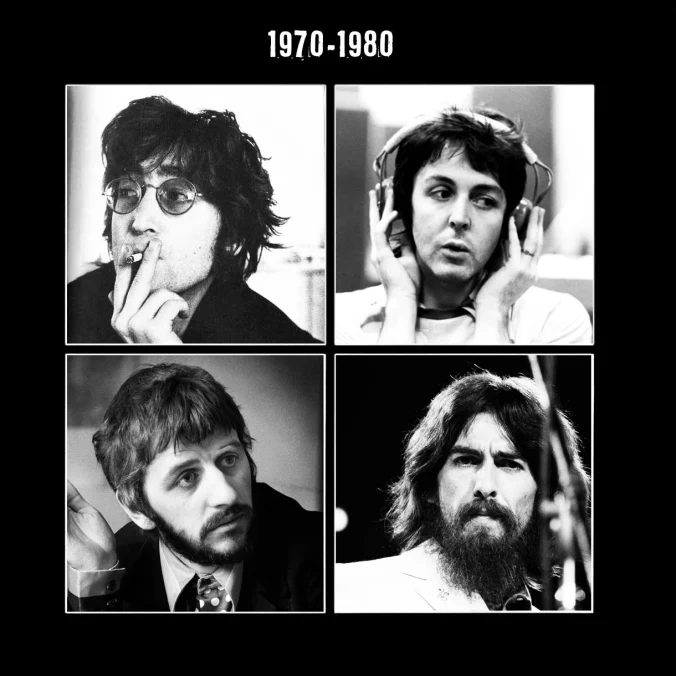
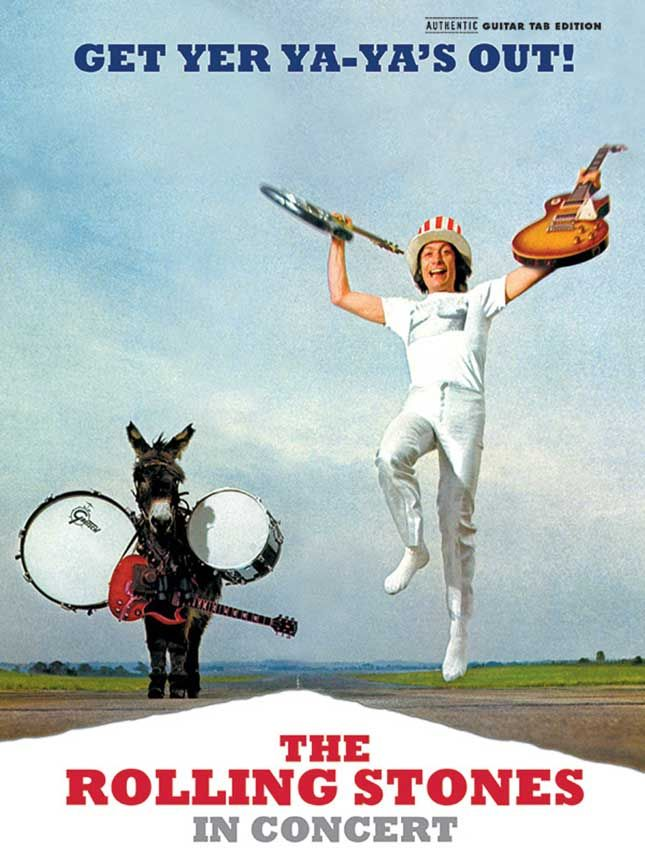
In the emerging genre of progressive rock, cerebral bands like Yes, Renaissance, and Rush joined more pop-friendly acts like Boston, Foreigner, Journey, and Kansas. British bands Supertramp and Electric Light Orchestra (ELO) demonstrated “prog influences” while still managing to produce hit records. And though the “arena rock” spectacles of the 70s would become iconic, they would eventually be replaced by more cost effective rock festivals, often featuring multiple major acts.
On the other end of the rock spectrum were punk bands like the Ramones, Blondie, and Patti Smith. In the UK, the Clash and the Sex Pistols defined a class-conscious, anti-authoritarian sound and aesthetic, which would in turn go on to inspire a myriad of other genres. Punk was all about DIY, bucking the establishment, sticking it to the man. In an era of dubious authority figures on both sides of the pond, punk threw up a big middle finger. It brought rock back to its roots of simple, insistent chord progressions and youthful rebellion against the status quo. Punk was and still is all about attitude. Though it would, by definition, never be commercial, punk laid the groundwork for some of the most successful “new wave” acts of the decade that followed.
In the world of “soft rock” where rock intersected with pop, the “piano men” - quintessential New Yorker Billy Joel in the States and flamboyant icon Elton John in the UK - dominated the airwaves with hit after hit. They were joined by the Gibb brothers (who largely moved away from disco post Saturday Night Fever), Elvis Presley (who continued his “easy listening/ballad” phase), Stevie Wonder, Marvin Gaye, Cat Stevens, and Rod Stewart. Female vocalists included Linda Ronstadt, Carly Simon, Donna Summer, Olivia Newton-John, and Helen Reddy, among many others. The humble “singer/songwriter” in the mold of Jim Croce and Carole King contrasted with the bombast of acts like Cher.
To put it mildly, the 1970s were a rough decade to live through. In a word, music helped.
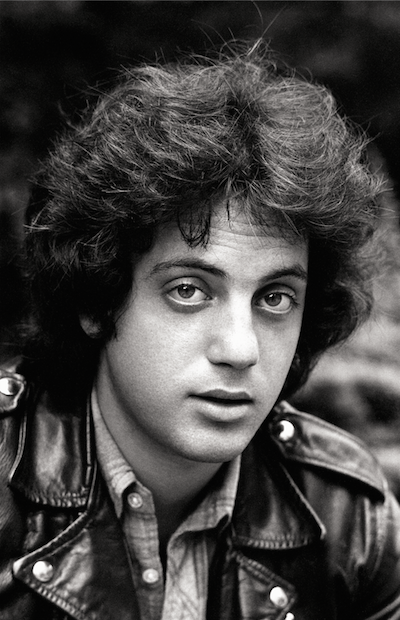
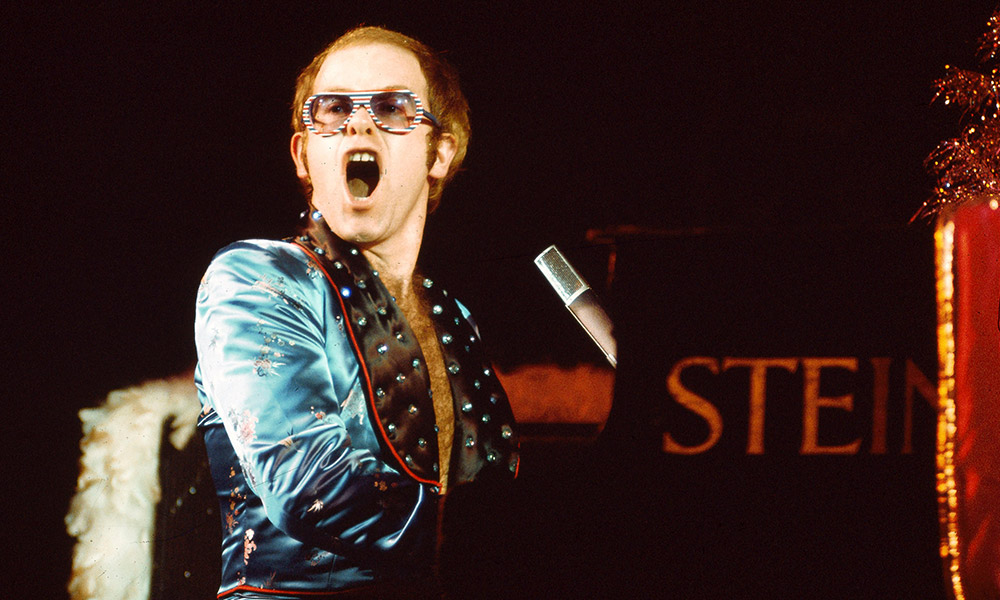
Above: Quintessential New Yorker Billy Joel (left); Flamboyant Pop-Rocker Elton John (right); the “Piano Men” of the 1970s
For the African-American community, music in the 1970s marked a vibrant and transformative period. This decade saw the continuation of the Civil Rights Movement and the Black Power movement's influence on music, as artists embraced their cultural roots and used their music as a form of expression and empowerment.
One of the defining genres of the 1970s was funk, characterized by its infectious grooves and rhythmic complexity. James Brown, often referred to as the "Godfather of Soul," was a central figure in this movement, and his innovative tracks like "Sex Machine" and "Get Up (I Feel Like Being a) Sex Machine" laid the foundation for funk music. Funk music was deeply rooted in African rhythms and often featured prominent bass lines, syncopated drum patterns, and horn sections, making it an incredibly influential genre.
Another major influence on African American music in the 1970s was, of course, the aforementioned disco. Emphasizing danceable rhythms, glamorous fashion, and a vibrant nightlife culture, disco arguably started as music for marginalized groups, like Black America and the Gay Community. African American artists like Donna Summer and Gloria Gaynor dominated the disco scene, creating iconic hits like "Hot Stuff” and "I Will Survive." Disco became a cultural phenomenon and a symbol of freedom and self-expression, not just for African Americans, but across the world.
Born in the Bronx, New York, hip hop developed near the end of the decade. African American and Latino youth in this borough developed a new form of music, with DJ Kool Herc being one of the pioneers. Hip hop combined elements of rap, breakdancing, and graffiti art, and it served as a platform for marginalized communities to address social issues, celebrate their culture, and gain recognition. Over the years, hip-hop has evolved into one of the most influential and globally recognized music genres.
Another of these genres, also pioneered by Black artists, was Reggae.
First emerging from Jamaica, it gained international recognition, thanks in large part to iconic artists like Bob Marley and the Wailers. The music's distinctive rhythms, characterized by a slow, pulsating beat, and socially conscious lyrics, served as a powerful voice for social and political change, addressing issues such as inequality and oppression. The 1970s also witnessed the development of subgenres like dub and roots reggae, expanding the genre's sonic palette. Reggae's global appeal grew during this decade, with Bob Marley's "No Woman, No Cry" and "One Love" becoming anthems of unity and love. The music not only provided a soundtrack for resistance and liberation but also left an enduring legacy that continues to shape music and culture worldwide.
Speaking of Marley, the Rastafarian icon underwent something of a personal journey in the 1970s as well. Following a failed assassination attempt in his home in 1976 (which was thought to be politically motivated), Marley underwent what he would come to call his “second spiritual awakening”. Though still associated with Rastafarianism, Marley would also be baptized into the Ethiopian Orthodox Church, claiming that he’d “seen God” in his near scrape with death. The following year, when Marley was diagnosed with acral lentiginous melanoma, he reluctantly followed the advice of his doctors and allowed them to amputate the affected toe. Though this surgery kept him from touring for several months, the decision to remove the cancer while it was still in its early stages, before it could spread to his vital organs, may have saved his life a second time in as many years.
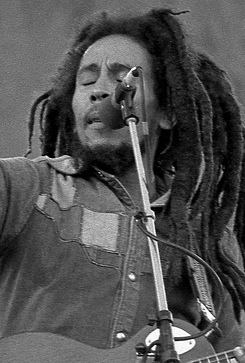
African American music in the 1970s was not just about entertainment; it was a reflection of the social and cultural changes of the era. It gave a voice to the African American community's experiences, struggles, and aspirations. These genres, including funk, disco, and hip-hop, have left a lasting impact on the music industry and continue to shape contemporary music, demonstrating the enduring power of Black musical innovation.
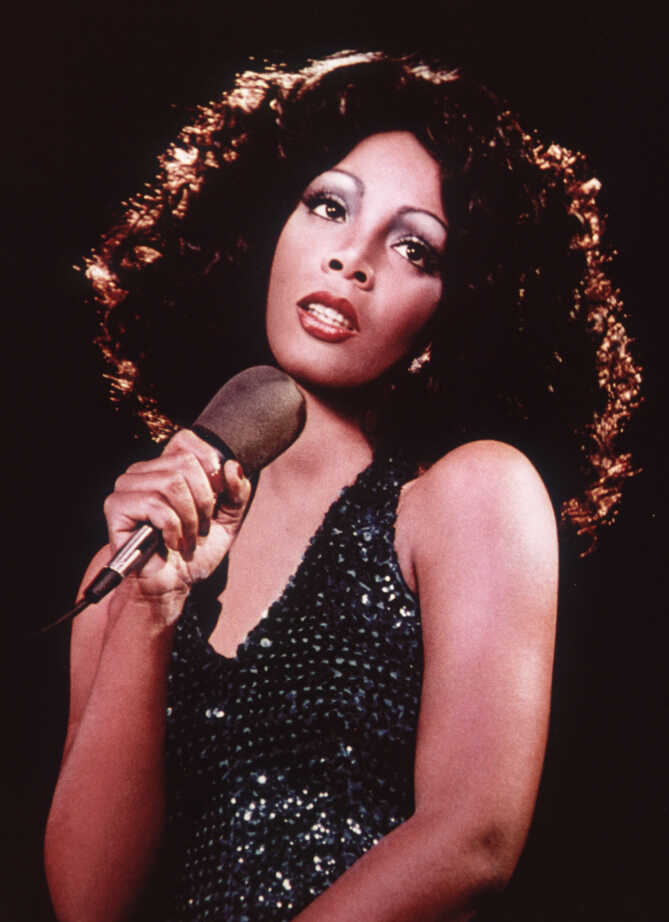
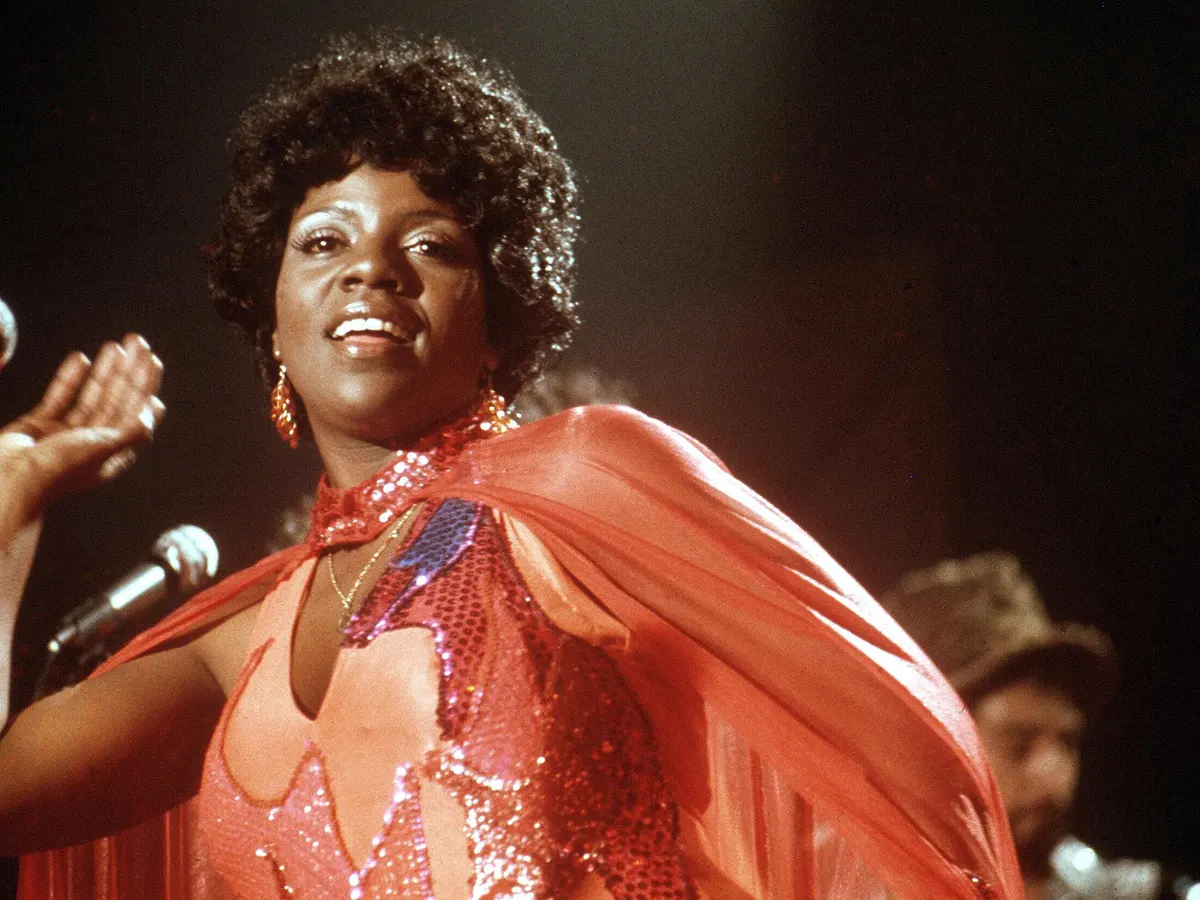
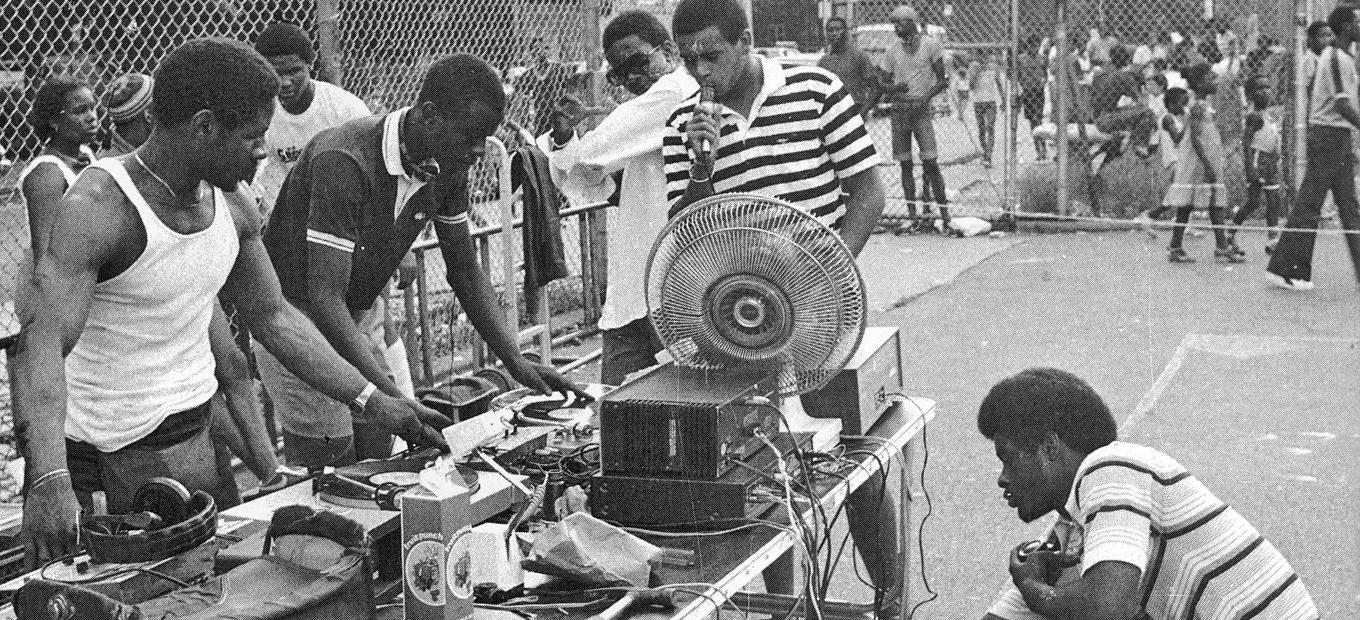
Finally, at the other end of the popular music spectrum was Country & Western (now largely shortened to just “Country”). Like all other genres, Country underwent significant evolution throughout the decade. Though traditional country sounds persisted and would never really go away (as evidenced by the continuing popularity of Gospel and Bluegrass, close to the genre’s roots), the 1970s also witnessed the emergence of various subgenres, just as it had for Rock music.
Perhaps the dominant trend of the era, in keeping with the notable anti-authority mood of the nation, was so-called “Outlaw Country”.
Challenging the Nashville establishment, acts like Willie Nelson, Waylon Jennings, and Merle Haggard rejected the polished, pop-oriented sound of mainstream country in favor of a grittier, more rebellious approach. Influenced by talented songwriters like the popular Kris Kristofferson and Townes Van Zandt, this subgenre featured lyrics that while beautiful, were also steeped in melancholy, even existential dread at times. Kristofferson went through a painful divorce with wife Janis Joplin in the late 70s, which probably served as inspiration for more than one of his mournful ballads. Van Zandt, meanwhile, continued to struggle with alcoholism, something which strained his own marriage to Emmylou Harris. Even Hank Williams, Jr., son of the “Hillbilly Shakespeare” himself rebelled against the establishment, singing songs like “Family Tradition”, which celebrated his outspoken personality and hard-drinking, hard-fighting persona.
Opposite the Outlaws were the so-called “Countrypolitan” acts. Characterized by lush orchestration and polished production, artists like Tammy Wynette, Glen Campbell, and Anne Murray achieved great success with this smoother, cross-over friendly style. Kenny Rogers had perhaps the biggest hits of all in this decade, with songs like “The Gambler” and “Lucille”, both of which broke onto the pop charts. “The King of Rock N Roll” Elvis Presley continued to pursue a more Country-esque sound throughout the 70s as well. By 1979, many critics accused Presley of “trying to become a Hillbilly Frank Sinatra in his middle age”. For his part, Presley resented the comment, and considered a hiatus from recording as the 1980s dawned.
The 1970s also saw the rise of a number of female artists to the country scene, including the aforementioned Emmylou Harris, Dolly Parton, and the ever-popular Loretta Lynn.
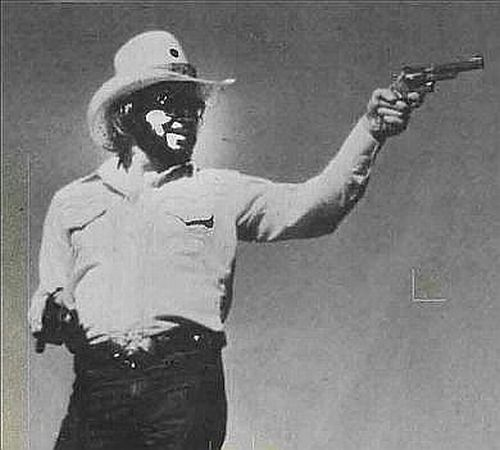
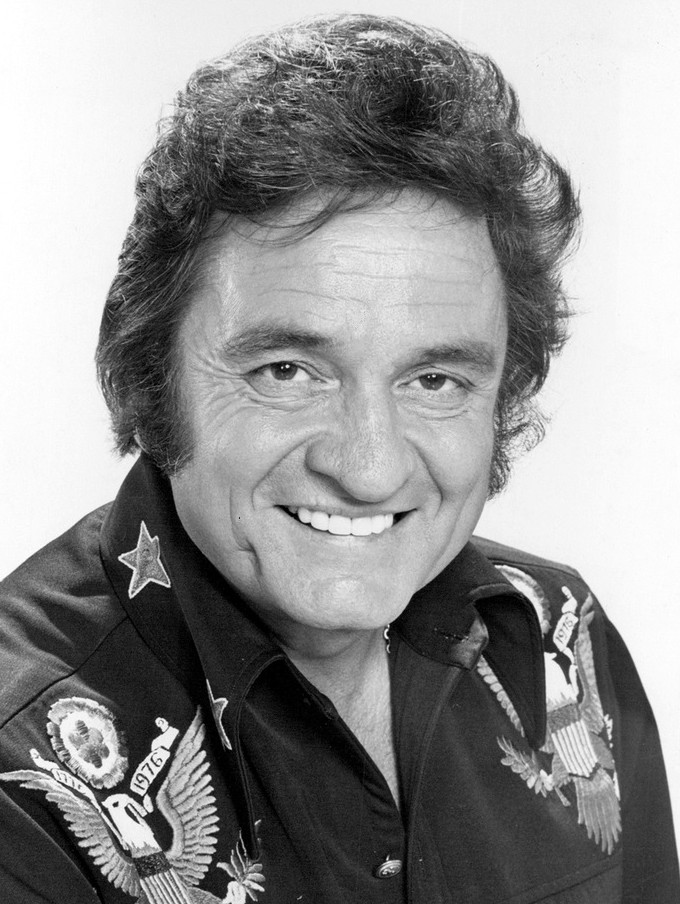
Meanwhile, Hank Jr.’s godfather, arguably the greatest country star of all time, “The Man in Black” Johnny Cash, reached new heights of popularity and widespread appeal. Having performed for the Kennedy, Romney, and Bush administrations at the White House, Cash was delighted when President Bush asked him to serve as Grand Marshal of the nation’s bicentennial parade in 1976. Cash did so, and then gave a free concert at the Washington Monument, which was broadcast all across America and the world via satellite, an impressive technical achievement at the time.
Though Cash was more popular than ever, his career too was about to fall into a slow decline. As his fans aged or moved on to other artists, Cash gradually fell into increasing levels of obscurity to all but his faithful. It would take a late career renaissance in the early 1990s for Cash to truly return to his roots, rediscover himself, and bring his stardom to a second generation of new fans. More on that later.
Finally, the 70s also saw the seeds planted for what would one day come to be called “Alternative”. Largely a rejection of mainstream trends in Rock and other genres, alternative, which saw its biggest following on college campuses and other “third spaces” across America, appealed to the younger baby boomers, born too late to be blown away by the Beatles or the late Bob Dylan, both of whom were seen as somewhat “old guard” by the late 70s. The genre would not come into its own, however, until the middle of the next decade. By that time, the next generation after the Boomers, “Generation X”, would push “alternative” into the mainstream, especially in the early 1990s.
One of alternative’s biggest bands, a so-called “post-punk” group from Stratford, England, UK was Joy Division. Led by enigmatic, brooding front man Ian Curtis, the band placed dark, melancholic lyrics over upbeat, nearly manic rock beats to produce a singular sound that took first their home country, then America by storm. Though the late 70s were a difficult time for Curtis personally, and though he struggled with epilepsy and depression, he sought help and eventually managed to overcome his demons in time to join the band for their first North American tour in May, 1980. Though by no means the only act of what would come to be called, “The Second British Invasion”, Joy Division would prove hugely influential on the development of Rock in the west.
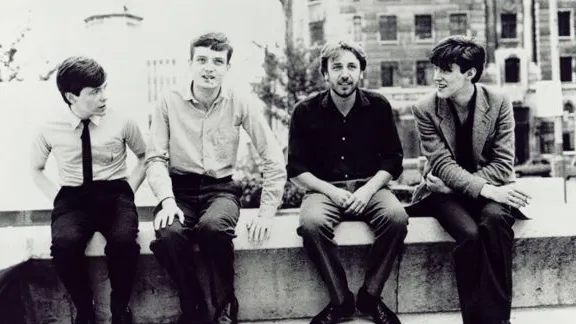
In general, music in the 70s was diverse. No matter what your taste, there was something on the radio or at the record store that would catch your interest. As vinyl was joined by first 8-track and later, cassette tape, the advent of synthesizers and electronic music was going to revolutionize pop in the 80s.
For more on that, stay tuned, dear listener.
Next Time on Blue Skies in Camelot: The 1980 Republican Primaries
Great collection of music in the late 70s. As you said the decade may be dark but the music sure is good 😄🤘
Love music and your chapters man! Great job!Much obliged!
Share: